Historical Trends in Hardwood Flooring
First used over five centuries ago, hardwood flooring has witnessed hundreds of years of history and changing design trends. So, to quickly explain them, we made a helpful guide breaking down the top historical trends in hardwood flooring.
In case you missed the first part of our Historical Hardwood Series, click here to read about the history of hardwood flooring.
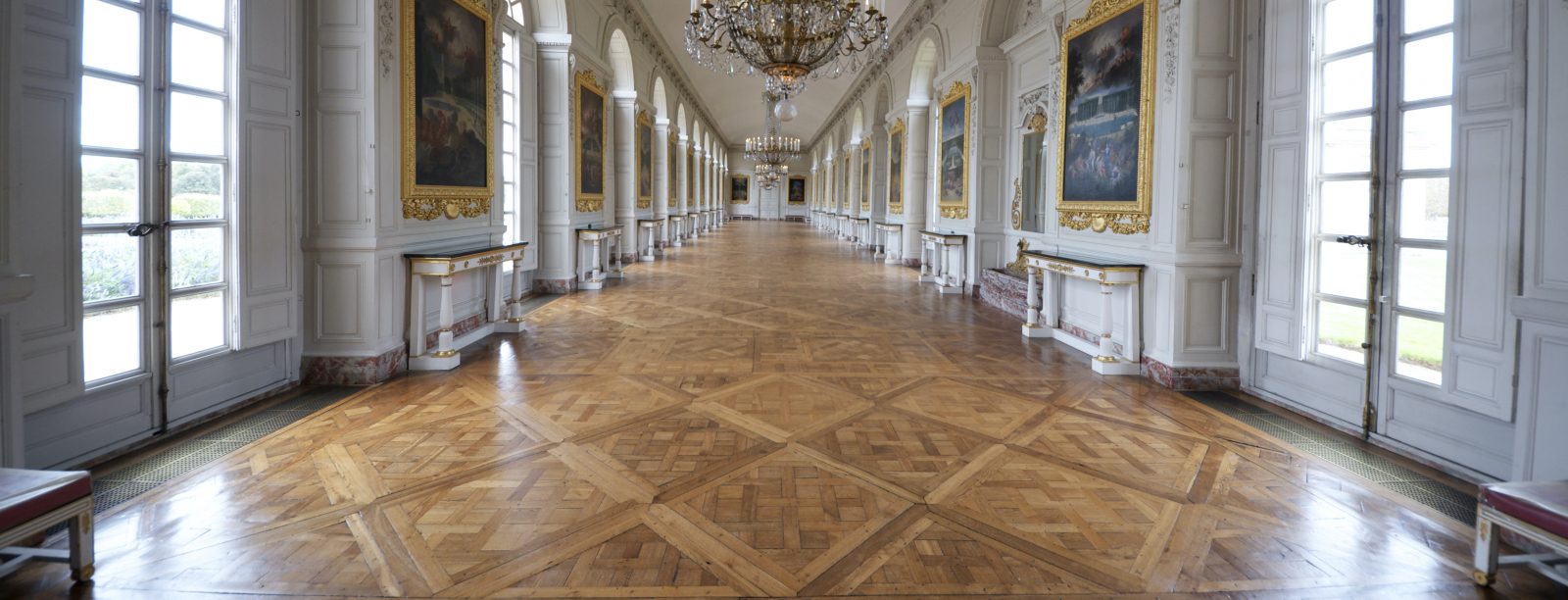
__________________________________
Historical Hardwood Trend #1: Unfinished Floors
While modern unfinished floors are designed to be a blank canvas upon which stains, oils, or finishes can be applied, traditional hardwood flooring was always left unfinished. This was not due to decorative purposes, but rather for functionality and practicality.
During the 1500s, hardwood flooring’s primitive period, contemporary flooring technology such as tongue-and-groove attachments had yet to be developed. This resulted in a hand-cut, hand-installed floor that was often unevenly leveled, but was still more than suitable for its purpose: to construct a second floor.
Thankfully, the unfinished hardwood floors of today are not a cause of splinters, stubbed toes, and various other mishaps. Instead, staining and finishing floors are done straight away rather than the old-fashioned technique of allowing a floor to be sanded and worn smooth over decades of wear and usage.
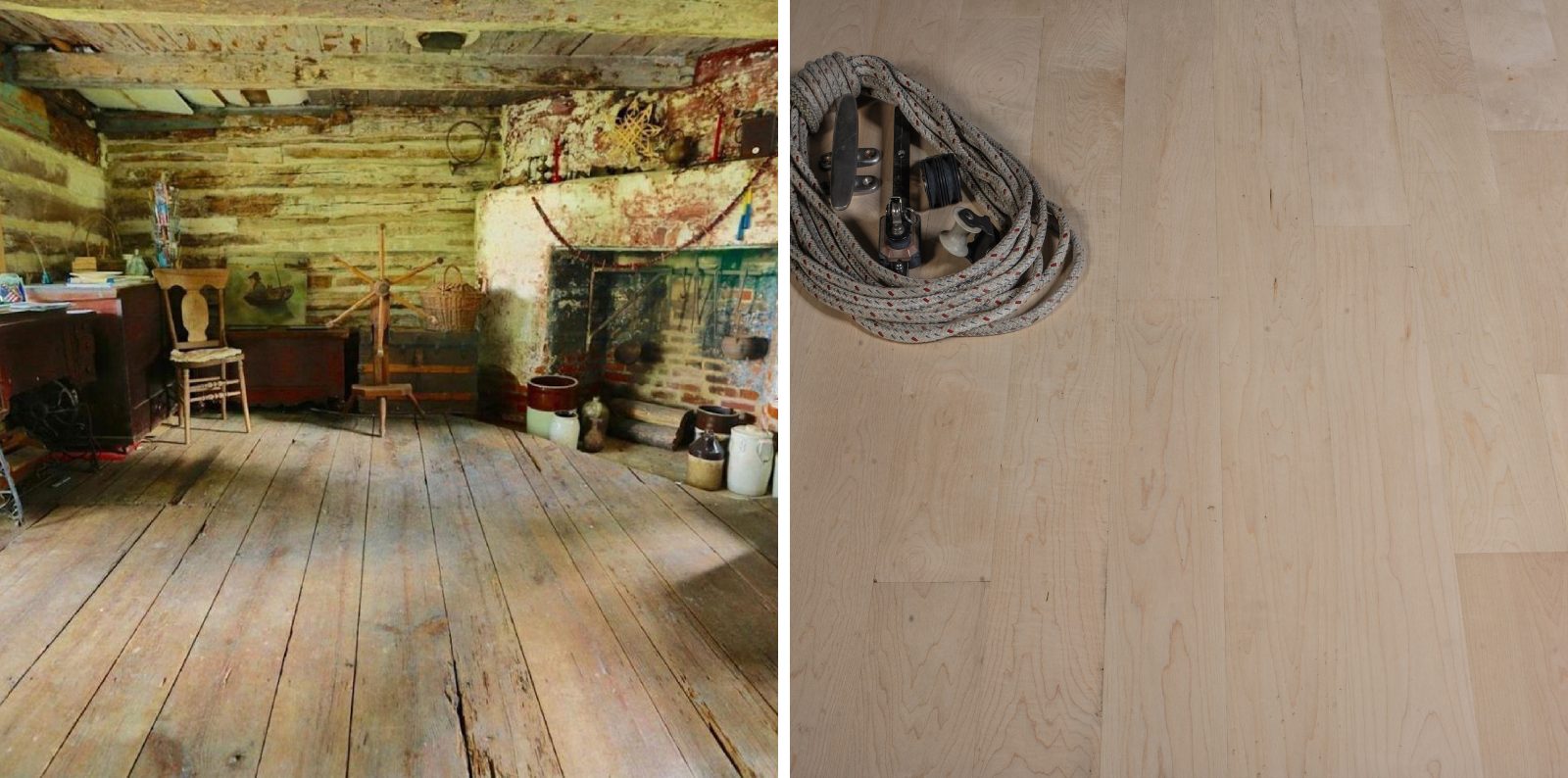
Then: Braman-Nothnagle Log House (1638) with an Early Ancestor of Our Unfinished Flooring | Now: Our Premium Unfinished Maple Hardwood Flooring
Historical Hardwood Trend #2: Parquet Flooring Patterns
Perhaps best popularized by King Louis XVI, parquet flooring patterns have always been synonymous with lavishness. The Palace at Versailles features vast expanses of intricately designed flooring. Now, nearly four hundred years later, parquet flooring continues to amaze design enthusiasts as it becomes more attainable, affordable, and practical to install.
In fact, parquet patterns are becoming ever more admired, and due to recent trends, we predict that they will explode in popularity over the next several years. This is definitely a train you want to hop on before it becomes more crowded!
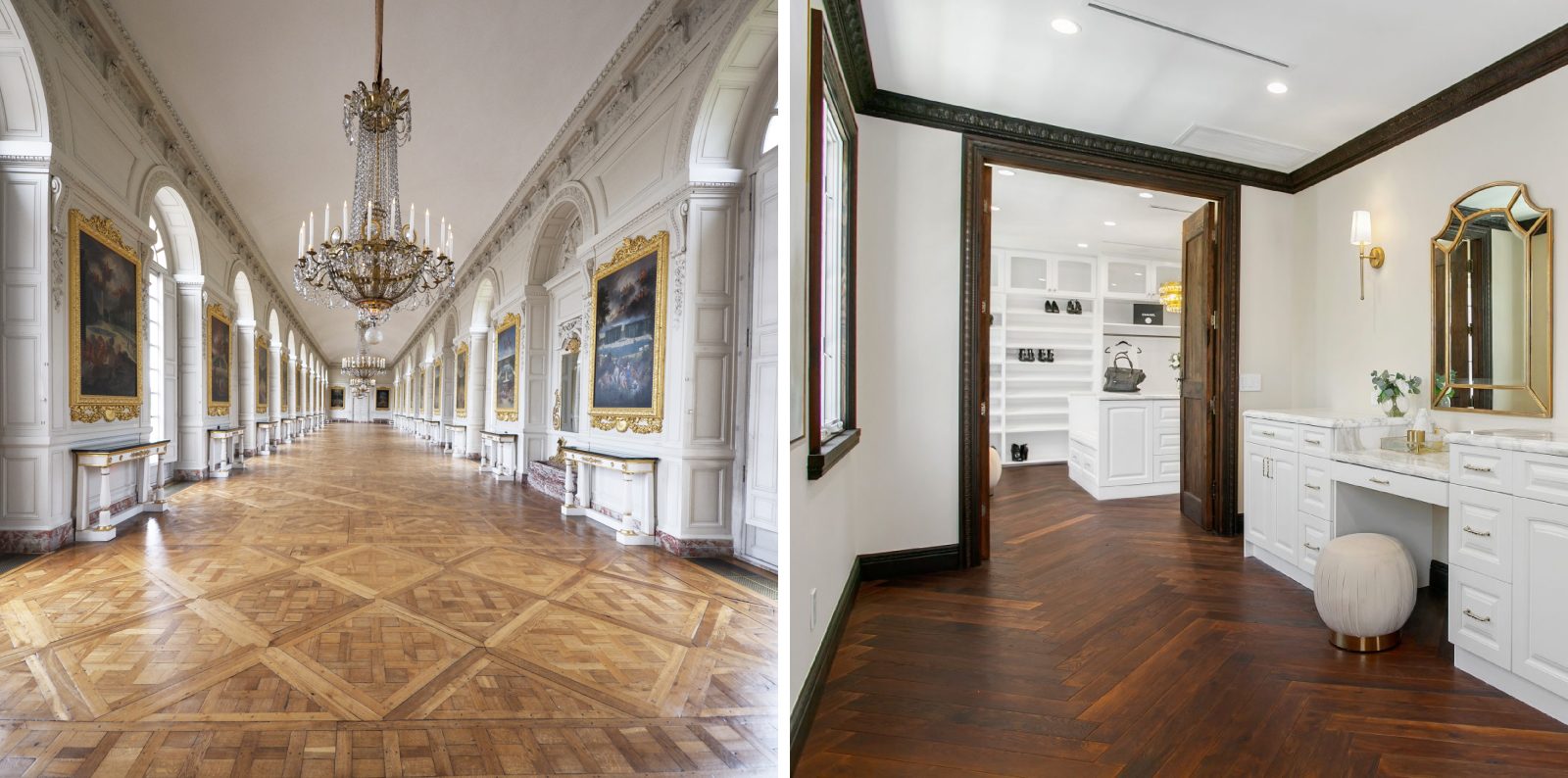
Then: The Palace of Versailles’ Parquet Flooring (1693) | Now: Our Caffe Hardwood in a Herringbone Parquet Pattern
Historical Hardwood Trend #3: Unnatural Flooring Tones
No, your European Oak flooring doesn’t naturally come in shades ranging from ivory to warm caramel to obsidian. And the same can be said for nearly any hardwood species, including Maple, Birch, Walnut, and many others. In fact, most modern hardwoods are typically treated with a stain in order to achieve the desired shade.
Such appreciation for varying flooring pigments can actually be traced as far back as approximately the 1700s when unfinished hardwood would be painted to emulate luxurious parquet patterns, to match the desired flooring shade, or to protect feet from the unfinished surface of the floor. Fortunately, due to the advent of stains and finishes, paint can remain solely on your walls and splinters can stay far away from your feet.
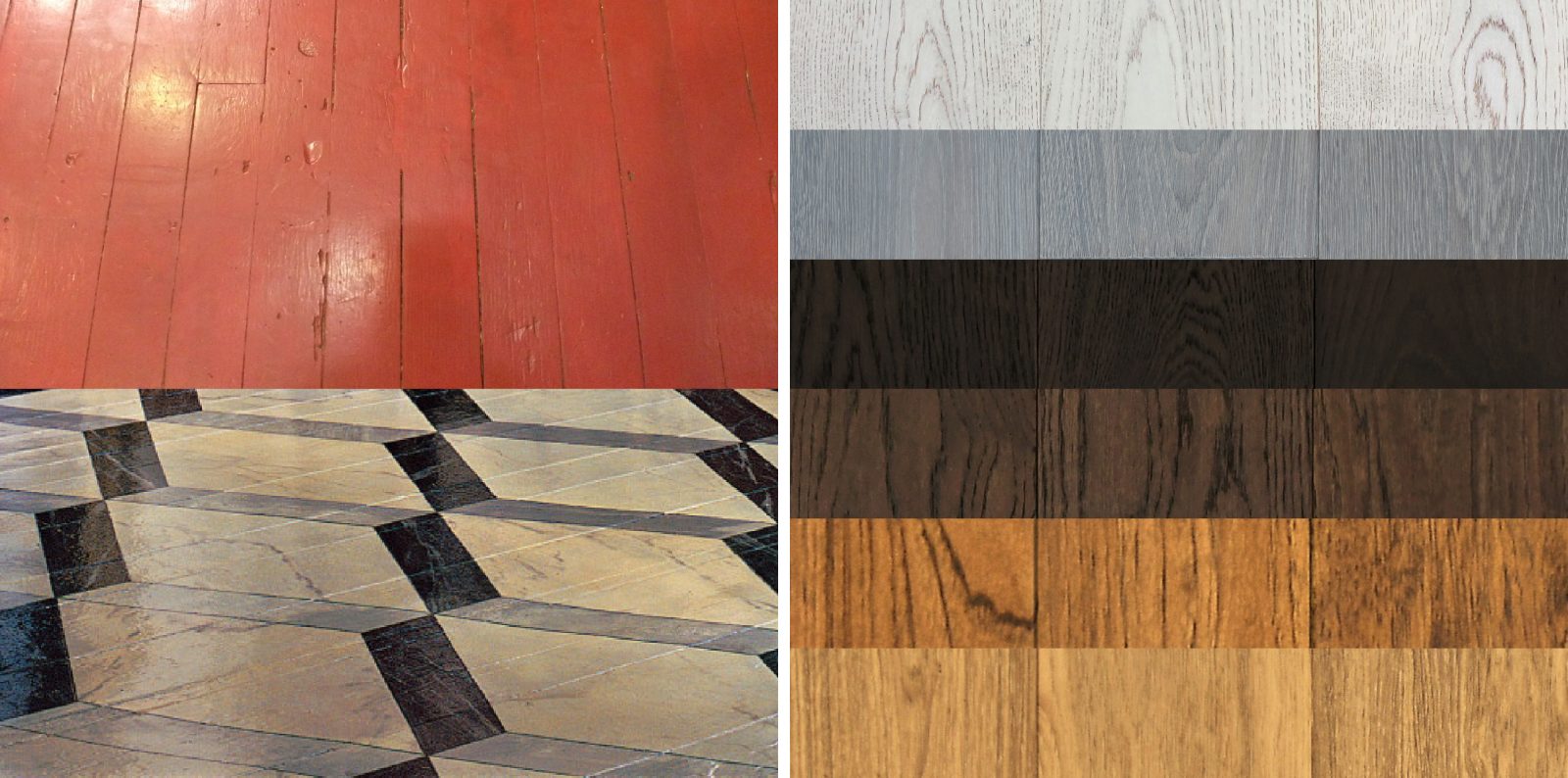
Then: Painted Hardwood Flooring (Pre-1900s) | Now: Stained hardwood flooring (From Top to Bottom: Garrison Custom Color / St. Tropez / Carmel / Zuma Beach / Hickory Chateau Distressed / Rovenza)
Historical Hardwood Trend #4: Engineered Hardwood Flooring
As you may know, engineered hardwood contrasts from solid hardwood in that it consists of a generous layer of hardwood atop a sheet of another wood material, whereas solid hardwood is a single piece of wood. If you would like a more in-depth explanation of their differences, click here for a short but intensive introduction to the differences between engineered and solid hardwood.
Engineered hardwood has many advantages to solid hardwood; however, this was not always the case. At its innovation in the Victorian era, engineered hardwood consisted of something akin to a “wood carpet,” which was little more than a heavy piece of canvas with thin strips of hardwood attached to it. While this was much simpler and more affordable to install at the time as compared to solid hardwood, it also faced many more challenges than contemporary engineered floors do. Most commonly, the thin layer of wood atop canvas would often chip, crack, and lacked any semblance of durability.
Thankfully, technological innovations circumnavigated the issues surrounding the earliest forms of engineered hardwood and today we have a durable, affordable, and eco-friendly product that can last decades or even centuries with the proper care.
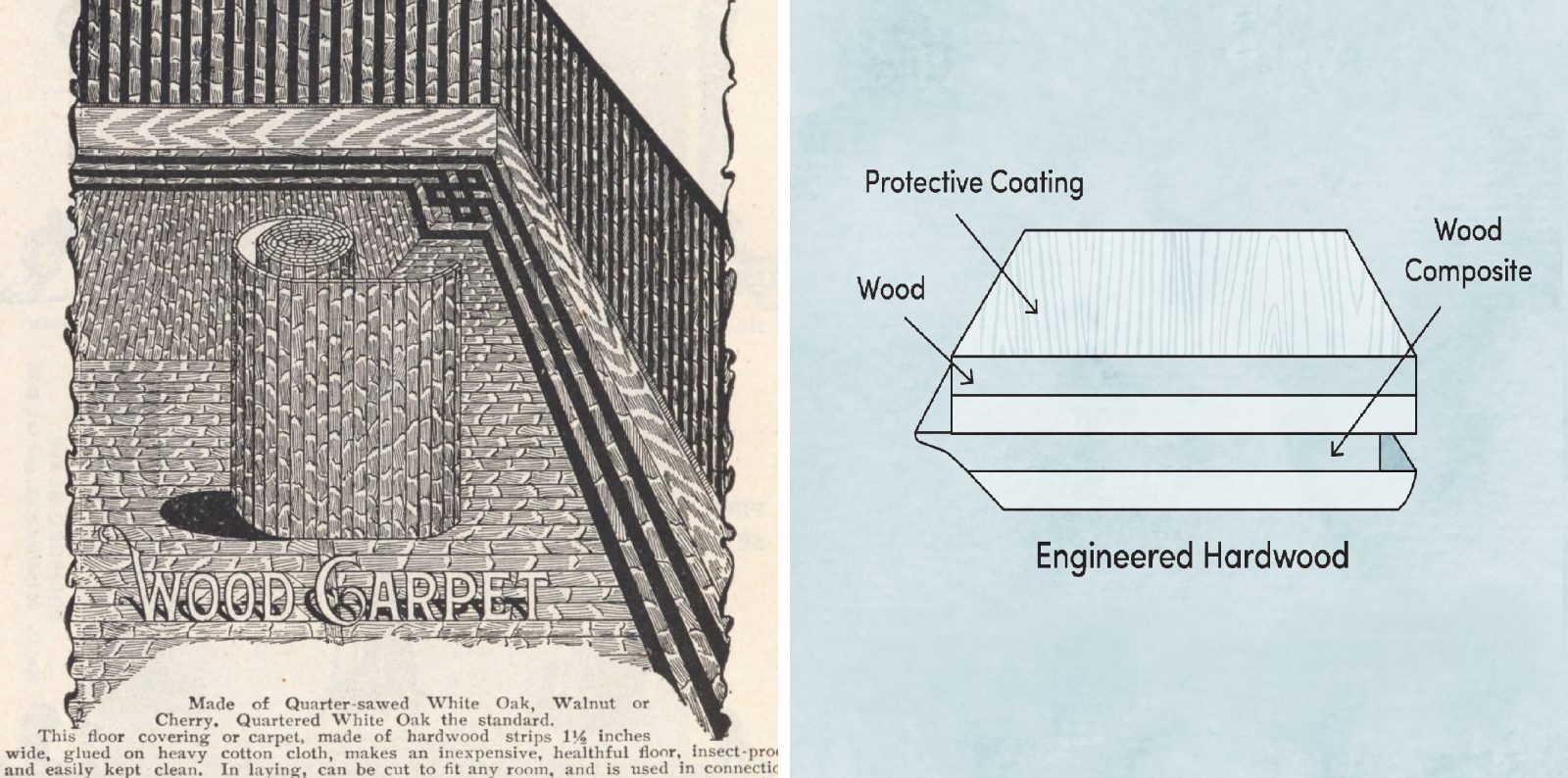
Then: An advertisement for Wood Carpet, an early ancestor of engineered hardwood | Now: Modern engineered hardwood
(Click here to read about the differences between engineered and solid hardwood)
Summarizing Historical Trends in Hardwood Flooring
Here are the top four historical trends in hardwood flooring –
- Unfinished Floors
- Parquet Floors
- Bright Flooring Shades
- Engineered Hardwood Flooring
And while interior styles are often fleeting and design movements come and go, hardwood trends are forever. If a particular style of hardwood catches your eye, definitely chase it! Through our extensive years in the business, we have seen that while tastes may experience adjustments, they will ultimately always return to their roots.